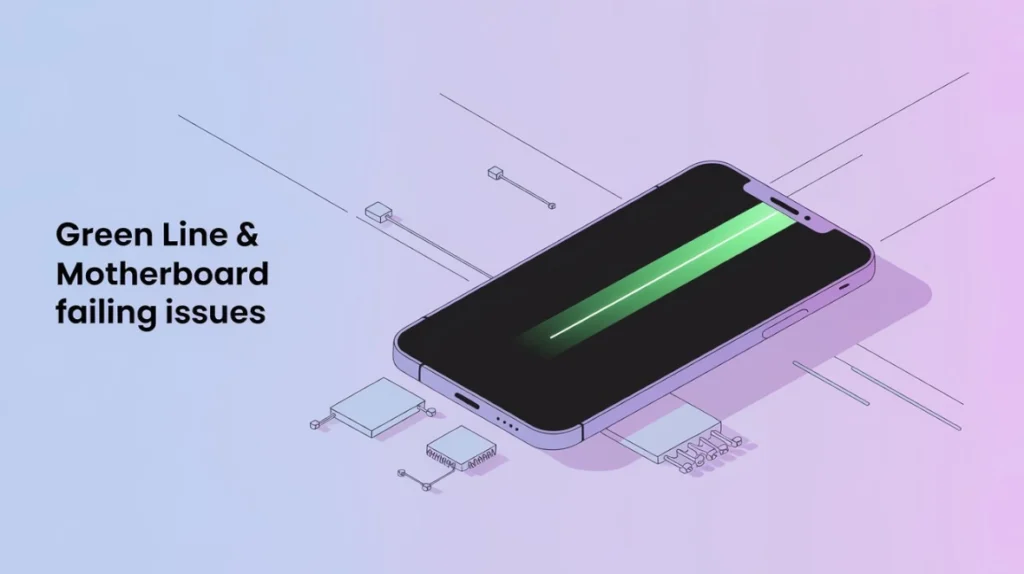In recent years, smartphone green line issues and motherboard failures—once associated mainly with OnePlus—have started appearing across various smartphone brands. Initially, the green line issue was observed only in OnePlus devices, but it soon spread to other manufacturers like Motorola, Vivo, and even Samsung. Additionally, what used to be a common problem in Poco phones—the infamous motherboard dead issue—has now surfaced in OnePlus devices as well. This raises important questions about the reasons behind these growing problems, their impact on consumers, and how manufacturers are addressing them.
The Role of the Pandemic and Chip Shortage
Many of these quality control problems can be traced back to smartphones launched during the pandemic, a period marked by a global chip shortage. During this time, manufacturers faced significant challenges in sourcing high-quality components. As a result, many companies resorted to using lower-quality parts, which led to problems like smartphone green line issues, dead motherboards, camera malfunctions, and even fogging in cameras.
Most of the smartphones experiencing these issues today were launched between 2020 and 2021, a time when the market was heavily affected by the pandemic. This includes the OnePlus 8, 9, and 10 series, as well as Poco and Redmi devices from the same period. These phones, now 2-3 years old, are showing signs of the low-quality components used during that challenging time, contributing to smartphone hardware failures.
Quality Control Issues
One of the key reasons for these recurring problems is inadequate quality control during the pandemic. Many companies, under pressure to release new models despite supply chain disruptions, prioritized getting products to market quickly rather than ensuring their long-term durability.
However, in recent years, manufacturers have improved their production processes and quality control measures, making newer devices far more reliable than those launched during the pandemic. That said, issues in older phones—such as dead motherboards and smartphone green line issues—are still surfacing today. On the positive side, companies like OnePlus have acknowledged these problems and provided free replacements for affected users, thereby regaining customer trust.
When companies admit their mistakes, they not only build customer loyalty but also demonstrate accountability in handling mobile phone manufacturing defects.
Software Updates and Hardware Strain
Another contributing factor is the impact of software updates. Many users report that issues like green line issues and motherboard failure occur after a major software update. This happens because updates often push the hardware to its limits, especially if the components are not of the highest quality. Prolonged processing during updates can generate heat, and if the phone is built with subpar components, this can trigger smartphone hardware failures.
Moreover, companies sometimes release buggy software updates under pressure to meet deadlines, which can exacerbate these issues. Even companies like Apple have not been immune, with some users reporting green line problems in iPhones after software updates.
Consumer Expectations and Innovation Pressure
Today’s smartphone companies face another challenge: rapidly evolving consumer expectations. Many users feel that new smartphones lack groundbreaking innovations, which has led to stagnation in sales compared to 2019-2020 levels. In response, companies are under immense pressure to pack more features and components into each device, often at the expense of quality control.
With tighter production cycles and a focus on frequent product launches, companies sometimes overlook important aspects like heat management and component reliability. However, there is hope, as some companies are now extending their product refresh cycles and working on long-lasting, sustainable innovations, particularly in software-based AI features.
Hardware Reliability and Long-Term Updates
One of the biggest challenges in smartphone manufacturing is ensuring that hardware reliability is strong enough for the long term. While some companies, like Samsung, have committed to providing software updates for up to seven years, the hardware in those devices also needs to last that long. This has become a key focus for manufacturers as they seek to improve hardware durability alongside software longevity.
Tips for Consumers
For consumers facing these issues, it’s important to manage expectations. While it’s easy to get frustrated when a device doesn’t meet your expectations, keeping a level-headed approach can help. Understand that no product is perfect, and avoid relying on future updates to fix current shortcomings. Additionally, after-sales service in many countries, such as India, has been inconsistent across brands, so users should be prepared for potential challenges when seeking support.
Another key piece of advice is to leverage social media—particularly platforms like X (formerly Twitter)—to resolve issues. Companies are often quick to address complaints aired on these platforms, especially regarding smartphone green line issues. However, it’s essential to use this approach responsibly and not exploit it to gain undue advantage.
Conclusion
Ultimately, smartphone companies must take responsibility for their products. When they acknowledge their mistakes and offer timely resolutions, they build trust and encourage customer loyalty. At the same time, consumers should be realistic about their expectations and stay informed about potential issues. By understanding the root causes of smartphone green line issues and motherboard failures, both users and manufacturers can work towards a better, more reliable smartphone experience.





